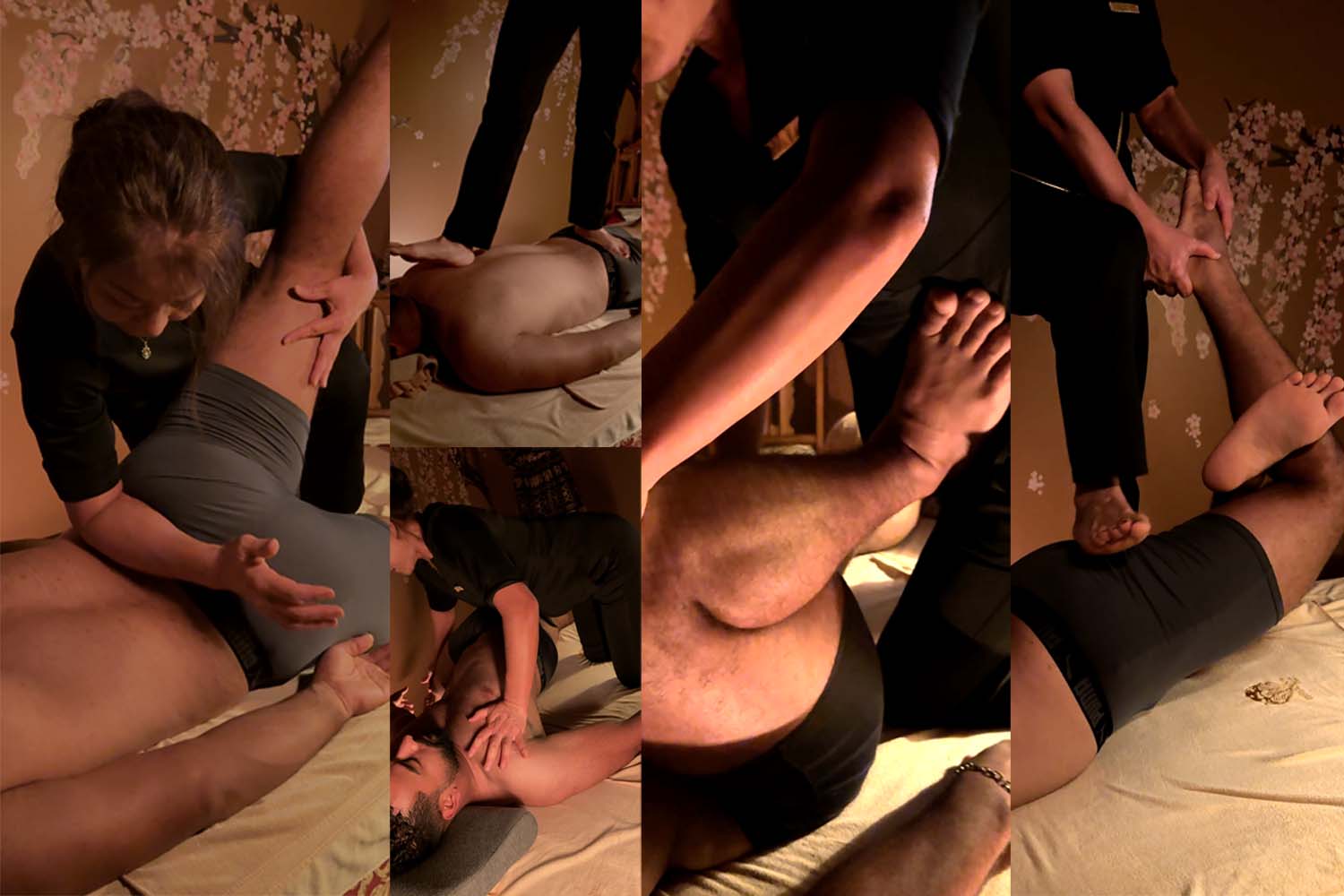July 27, 2025

If you’ve been in the gym squatting heavy, pulling deadlifts, or powering through sled pushes, you already know that your muscles aren’t just tight—they're armored. And while foam rollers and Theraguns have their place, they can’t compete with what two ancient massage styles bring to the table (or the mat): Ashiatsu and Thai massage.
These modalities are particularly effective for lifters who push their limits—because they push back. Hard. They target your fascia, joints, and deep muscular knots in ways other massage styles can’t. For heavy lifters, these are not luxuries. They’re tools. Let’s break down why.
Weight training, particularly heavy lifting, does more than just break down muscle tissue. It creates adaptive stress on connective tissue, tendons, and joints. The goal is muscular hypertrophy and strength gains, but the byproduct is often tightness, soreness, and restricted range of motion.
A 2020 study in the Journal of Strength and Conditioning Research noted that heavy eccentric loading (common in strength programs) leads to microtrauma not just in muscle fibers, but in fascia and supporting structures. That means recovery isn’t just about foam rolling quads or “stretching out the hammies.” You need interventions that affect the whole kinetic chain.
Ashiatsu, which translates loosely to “foot pressure,” is a deep tissue massage performed with the therapist’s feet. Using overhead bars for balance, the practitioner applies gravity-assisted pressure along your spine, glutes, hamstrings, and calves—without the “pointy elbow pain” that often accompanies traditional deep tissue work.
Why it works for lifters:
A 2017 review in Complementary Therapies in Clinical Practice found that myofascial therapies like Ashiatsu can significantly improve range of motion and reduce delayed-onset muscle soreness (DOMS) in athletes. For lifters who train multiple times per week, this translates to better training frequency and performance.
Now let’s talk Thai massage, which is sometimes described as “lazy man’s yoga.” It blends assisted stretching, acupressure, and rhythmic compression into a full-body session designed to unlock stiffness at the joint and fascial level.
Why Thai massage is ideal post-heavy session:
In a 2015 study published in the Journal of Bodywork and Movement Therapies, Thai massage was shown to improve flexibility, pain scores, and overall physical function in athletic populations—especially those with limited mobility due to overuse or compensation patterns.
Used together, Ashiatsu and Thai massage provide a complete system of muscular reset and joint recalibration.
For lifters following progressive overload, powerlifting templates, or hypertrophy programs, rotating between these two modalities weekly or biweekly ensures the muscular work doesn’t outpace your recovery.
Example protocol:
You don’t need to be in pain to benefit—but if any of these sound familiar, it’s time to book:
Lifting heavy builds strength. But walking around with bricks for glutes, locked-up hamstrings, and a compressed spine doesn’t make you stronger—it makes you stuck. Ashiatsu and Thai massage are not just for relaxation. They’re performance tools. Tools that dig in, stretch you out, and unlock the mobility that heavy lifting gradually takes away.
If you’re serious about long-term gains, put your body on the schedule. Just like you periodize your lifting, periodize your recovery. Massage isn't the dessert—it’s part of the main course. Learn more about massage sessions here: Signature Massage
If you're lifting heavy, training hard, or just feel like your body is running on tight mode 24/7, Ashiatsu and Thai massage are waiting for you. At the end of the day, the goal is not just to get strong—but to stay strong, move well, and recover fully.